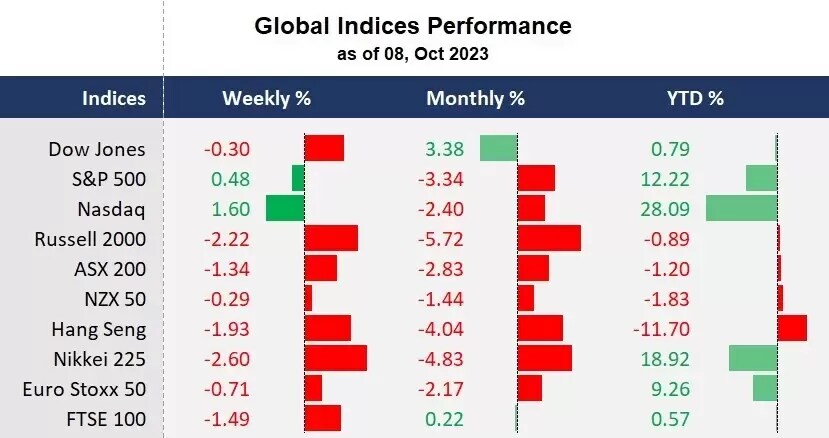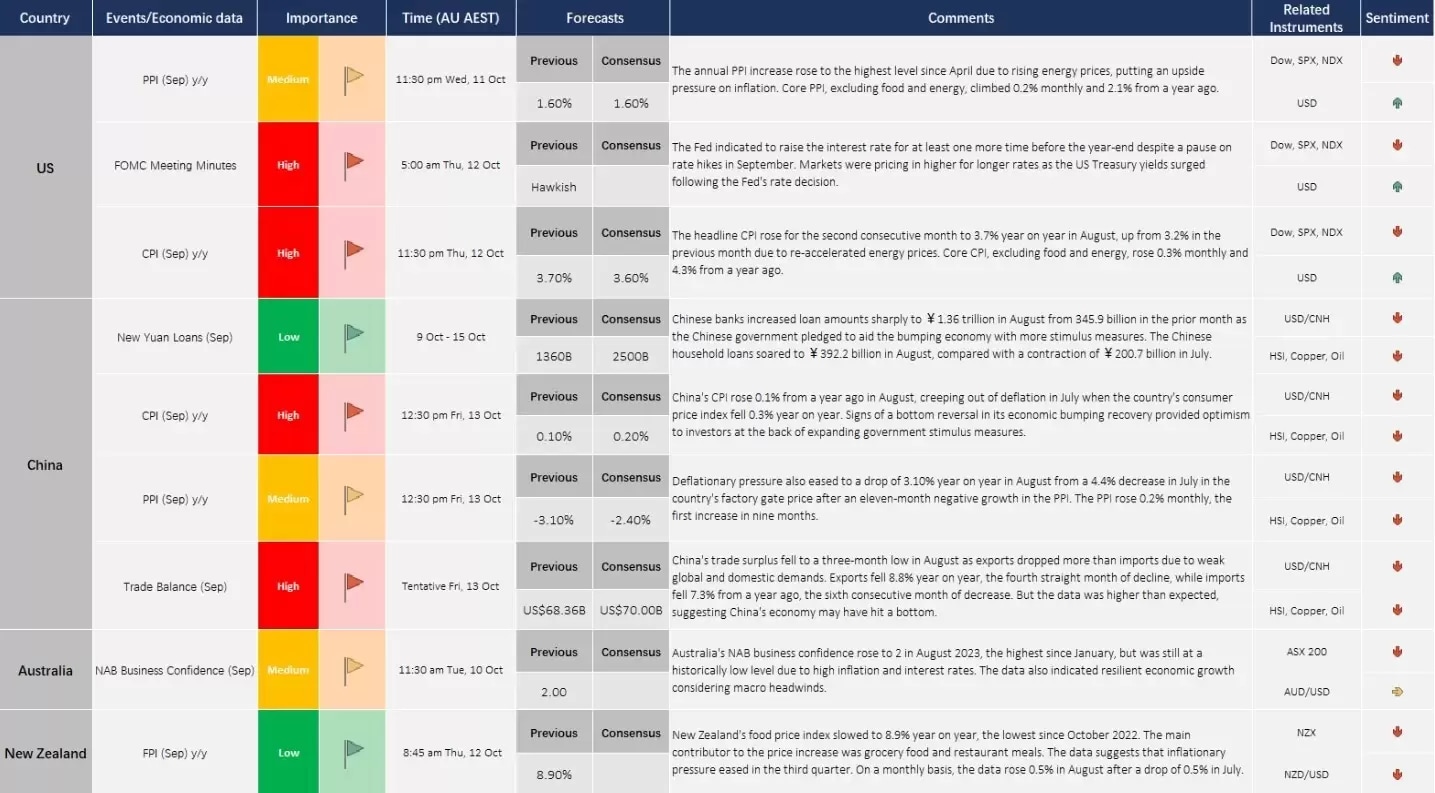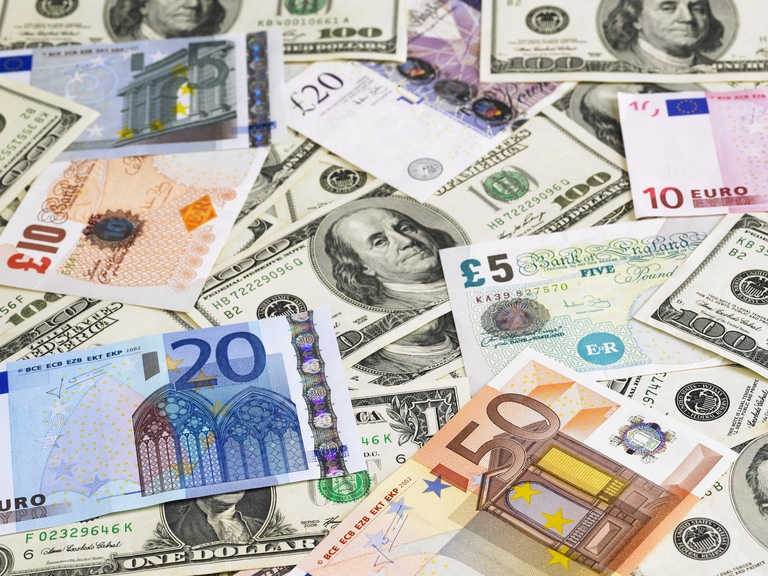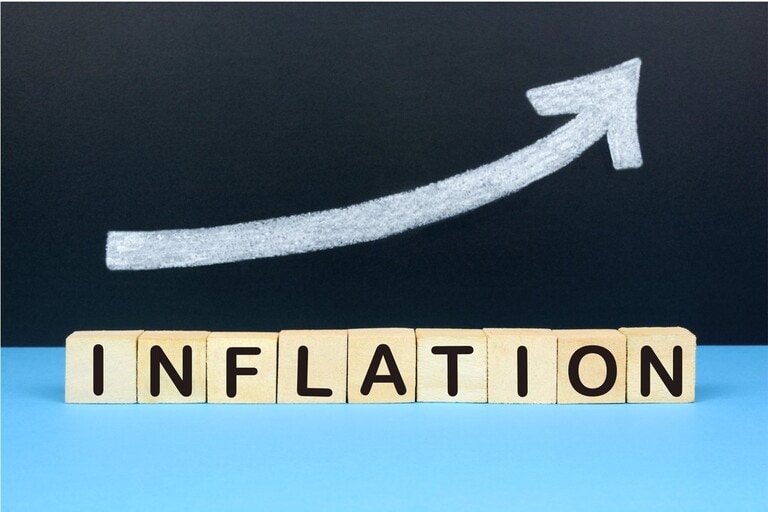The global stock markets were resilient, despite bond jitters as investors were digesting higher for longer rates. S&P 500 and Nasdaq posted the best week in over a month. However, the Israel-Hamas conflicts over the weekend may escalate geopolitical tensions in the Middle East region, causing risk-off trades on the Monday open. Crude oil could be set for a jump open due to risks for production disruptions, though neither Israel nor Palestine are major oil producers, but markets will be concerned about the rippling effects to the region.
At the same time, the US dollar’s upside momentum eased and potentially buoyed commodity prices, with gold and silver testing their recent lows. But bond yields remain the focus of investors, given the impact on liquidity conditions, equity valuations, FX movements, and broad sentiment.
This week, we focus on the upcoming US September CPI data, which provides clues to the country’s inflation trajectory and helps project the Fed’s rate hike path. The second focus will be on the upcoming US Q3 earnings season, kicking off with big banks, including JP Morgan Chase, Wells Fargo, and Citigroup.
Chinese stock markets recovered gains on the return of the golden week holiday, given positive signs in consumer spending. Tourism revenue from the week surged to 753.4 billion yuan (US$103 billion), with spending jumping 130% from the same period last year when the country was in the hardest COVID-19 lockdowns. China will report a slew of bellwether economic data, including its new yuan loans CPI, PPI, and trade balance for September. While the lingering risks may continue to weigh on sentiment amid the property woes, Chinese economic data signalled an improvement in August, suggesting the world’s second-largest economy may have hit bottom. Positive Chinese economic data, coupled with a recovery in risk sentiment, may offer a rebound in risk assets, including equities, and industrial metal prices.
The last, New Zealand election will fall on the weekend, with the current poll pointing to a possible right-wing party win, which is usually seen as positive for the local stock markets, the NZX and the Kiwi dollar.
What are we watching?
- The US dollar rally eases: The dollar index finished lower after an eleven-week straight gain as the US non-farm payroll showed that wage growth slowed and the unemployment rate was slightly higher than expected, despite a surprising jump on an increase in employment.
- Tech stocks signal a rebound: Technology shares rebounded, with the two growth sectors, including Technology and Communication Services, outperforming the S&P 500 last week on possible dip-buys ahead of the quarterly company earnings.
- Watch for crude oil opening: Oil may set for a jump open due to unrest on the Isreal-Hamas conflicts but crude prices sharply declined on demand concerns as global economic uncertainties mounted amid surging bond yields. The output volume also rose for the second straight month in September, despite the OPEC+ alliance maintaining their output cuts to the end of the year.
- Gold may have been oversold: Gold price stabilised at its recent lows as the precious metal may have been oversold. And the US dollar and the US bond yields halted surging.








